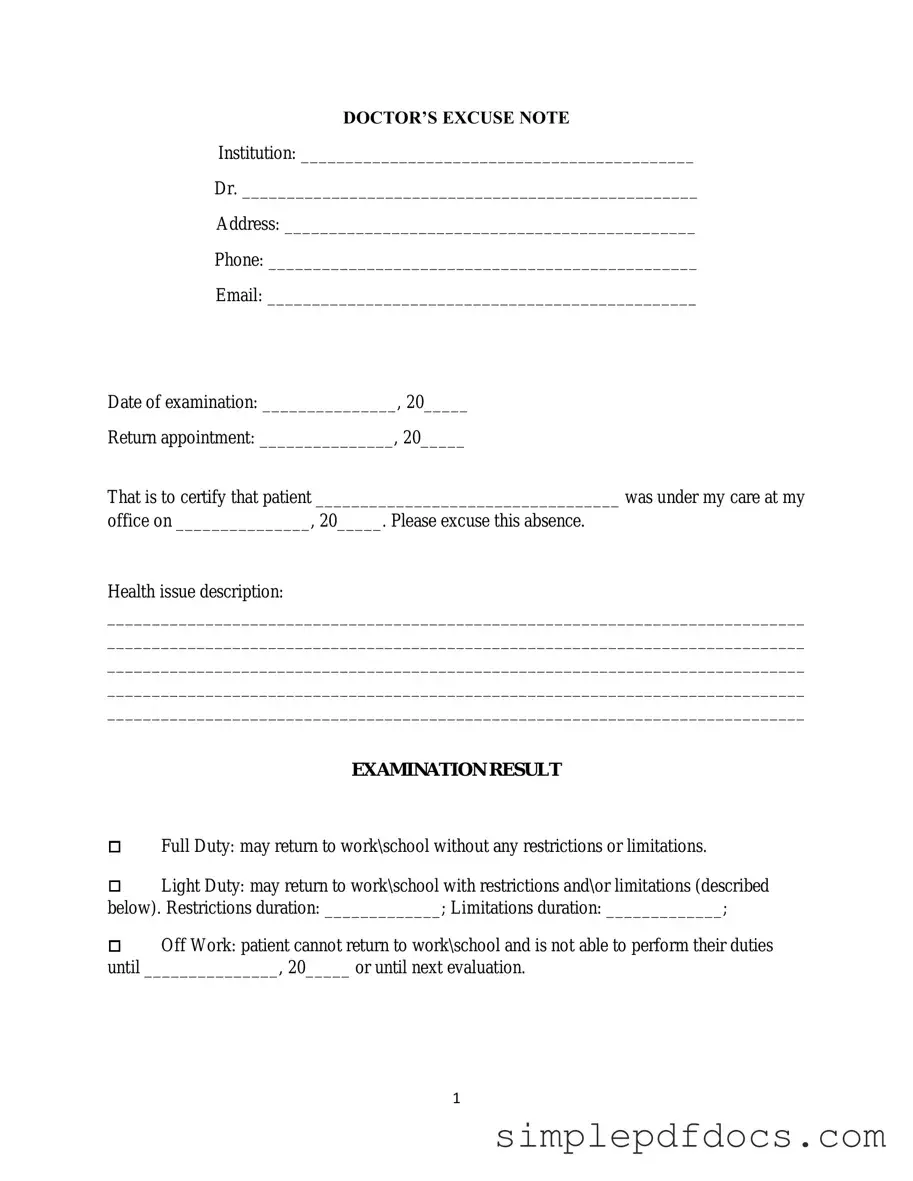Fill Your Doctors Excuse Note Form
The Doctors Excuse Note form serves as a formal document provided by healthcare professionals to verify a patient's medical condition and justify their absence from work or school. This note is essential for individuals needing to communicate their health-related circumstances to employers or educational institutions. Understanding its purpose and how to obtain one can help streamline the process of managing health and responsibilities.
Get Document Here
